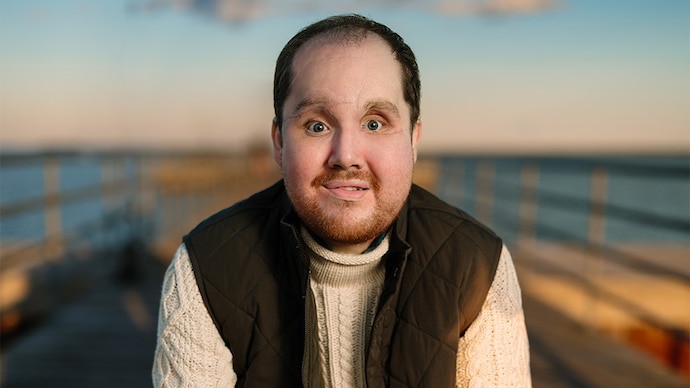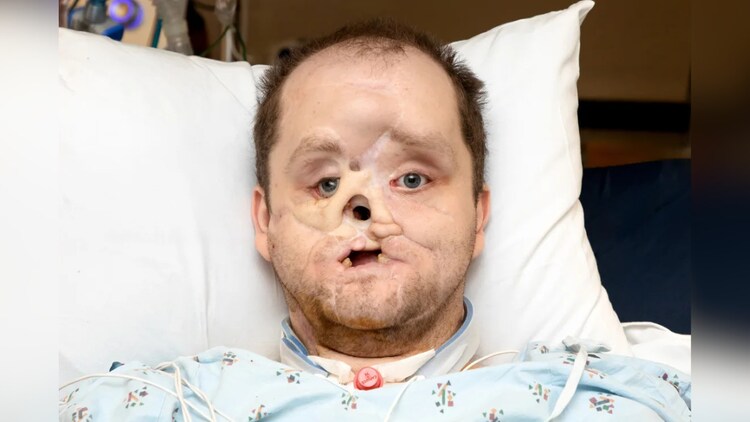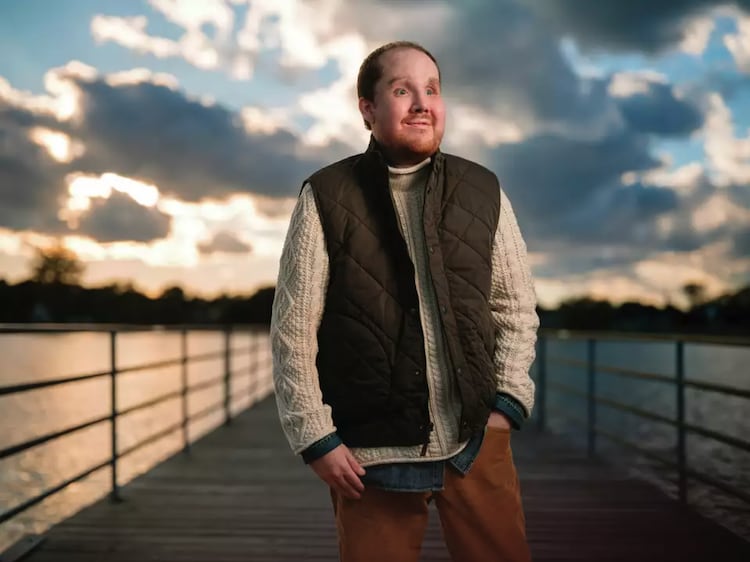How did an American man survive after 58 surgeries and a face transplant to blink, smile and breathe?
An American man has undergone a successful face transplant, in a 50-hour surgery involving 80 health care professionals.

An American man underwent a successful face transplant at the Mayo Clinic that took more than 50 hours. A medical team of at least 80 health care professionals, including surgeons, anesthesiologists, nurses, technicians, assistants and other specialists, were involved in the surgery.
Derek Pfaff, 30, of Michigan, US, can now blink, swallow, smile and breathe through his nose for the first time in 10 years since his suicide attempt on March 5, 2014.
According to the Mayo Clinic, David Pfaff tried to commit suicide during his college years because he was “under so much pressure.”
Despite undergoing 58 reconstructive facial surgeries over the years, he was unable to eat solid food or speak properly with his friends and family. Without his nose, he could not wear his glasses.

“I live for a reason. I want to help others,” Pfaff said. “I am extremely grateful to my donor, his family, and my care team at Mayo Clinic for giving me this second chance.”
In the 19 years since the first face transplant, more than 50 such procedures have been performed globally, with encouraging results, a recent study in JAMA Surgery showed.
Mayo Clinic completed its first face transplant in 2016.
How was the surgery done?
The face transplant surgery was performed in February 2024 under the leadership of Dr. Samir Mardini, a facial reconstructive and facial animation surgeon in Mayo Clinic’s Reconstructive Transplant Program.
During that time, they estimated that 85% of Pfaff’s face, including the mandible and maxilla (the bones making up the upper and lower jaws), were reconstructed and replaced with donor tissue.
This complex surgery replaced almost everything below her eyebrows, including the eyelids, jaw bones, teeth, nose, cheek bones, skin of the neck and parts of the palate.
The surgery took months of detailed planning. The team created a digital surgical plan using scans of the faces of both Pfaff and the donor.
This allowed them to perform a “virtual” version of the surgery in advance. A customized 3D-printed device was used to implement the plan during the actual procedure.

One of the most important aspects was the reconnection of 18 fragile facial nerve branches to ensure that Pfaff could regain facial functions.
A new microsurgery technique was also used to implant the donor’s tear drainage system, allowing Pfaff to produce and drain tears naturally.
The transplant has restored Pfaff’s ability to express emotions such as happiness, sadness and joy. “Most organ transplants are lifesaving, but a face transplant is lifesaving. It allows someone to truly live again,” Dr. Mardini said.
This remarkable surgery was performed in collaboration with multiple medical specialties including transplant surgery, neurology, ophthalmology, dermatology and speech therapy, as well as the donor’s family. The organ procurement organization LifeSource helped coordinate the donation process.
Pfaff expressed gratitude for the transformative surgery. He said, “It has changed my life. I feel more confident and hopeful about my future. I dream of meeting someone, starting a family, and continuing to share my story to inspire others “
This successful face transplant represents a medical milestone, giving patients like Pfaff something to look forward to.





